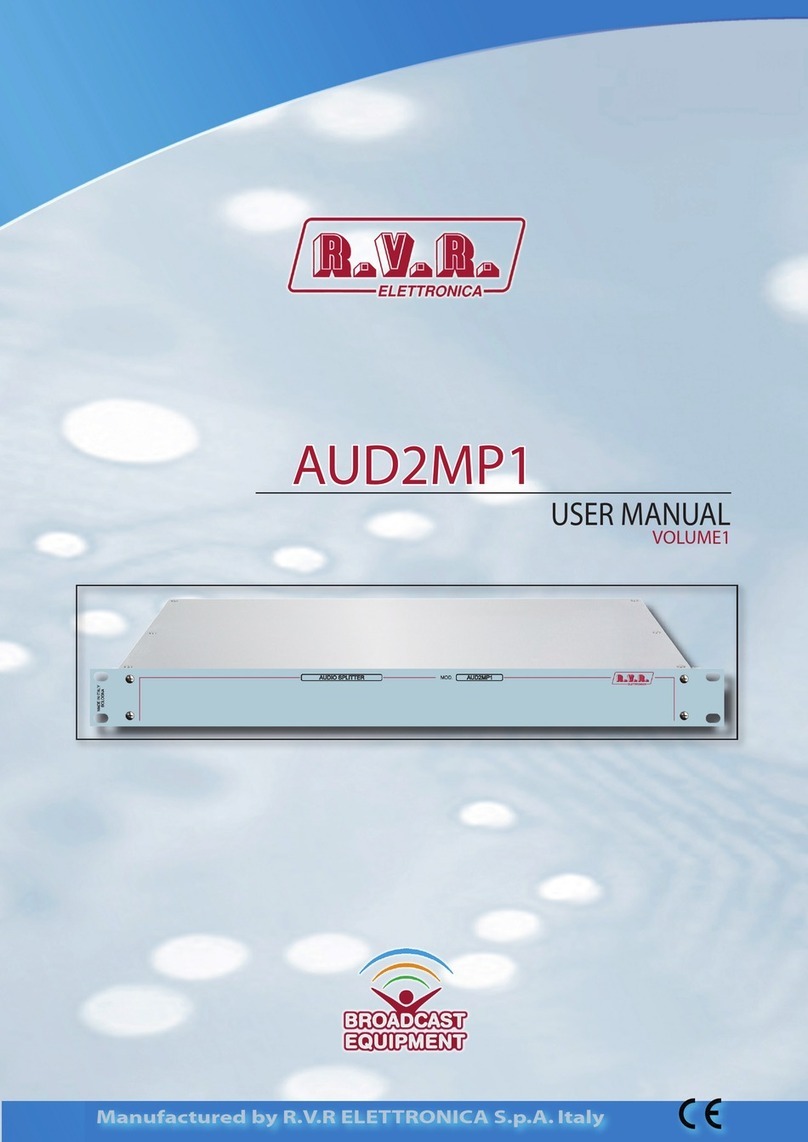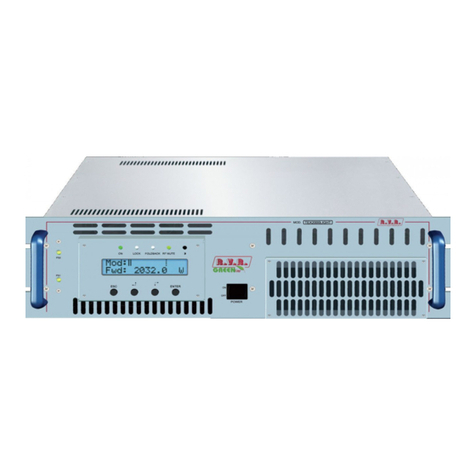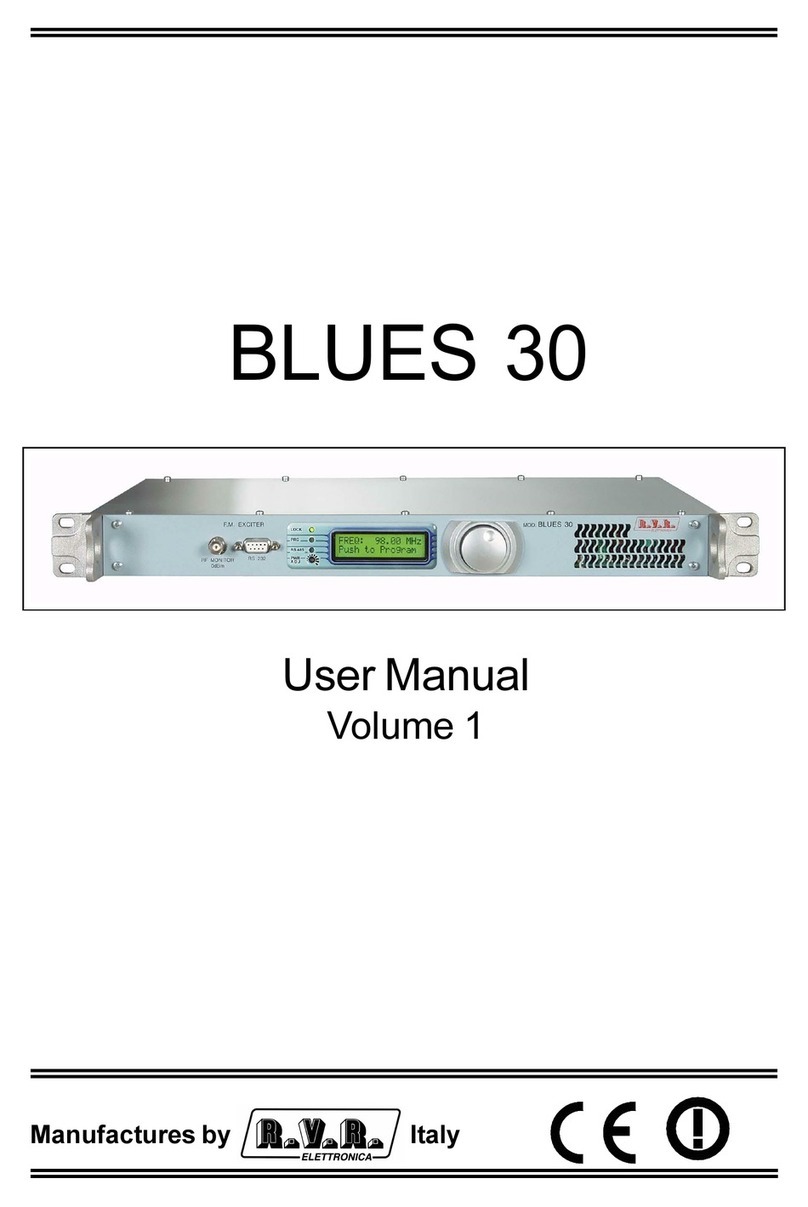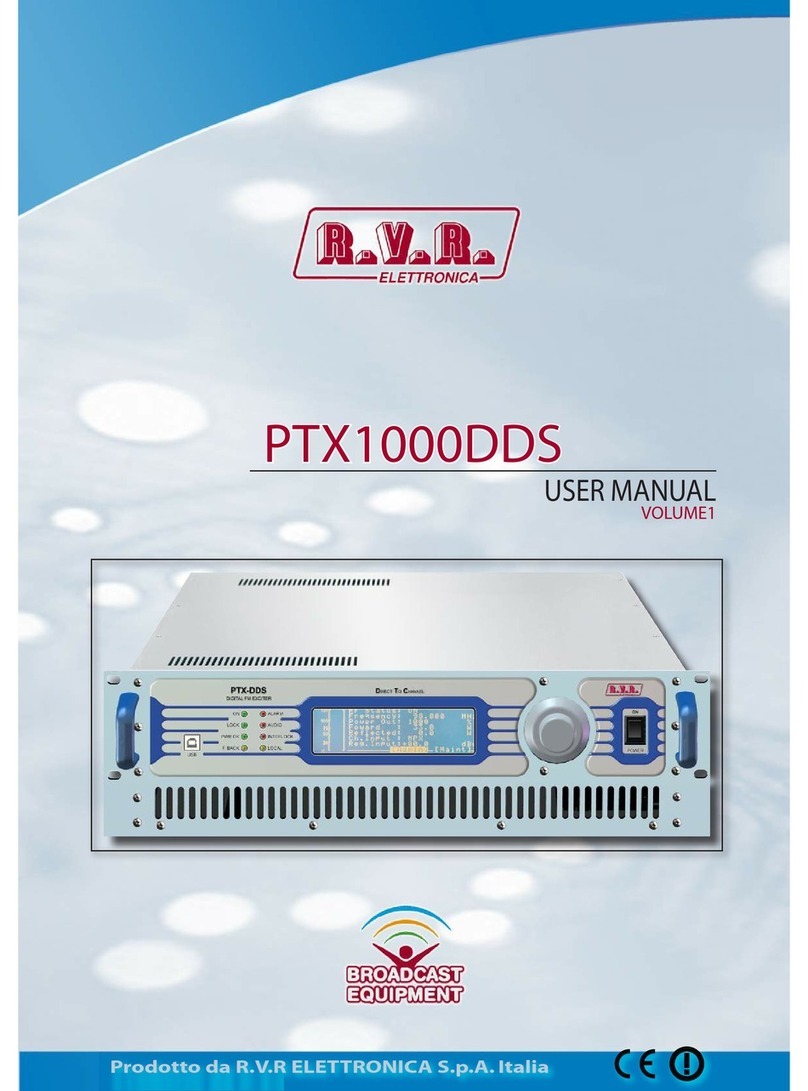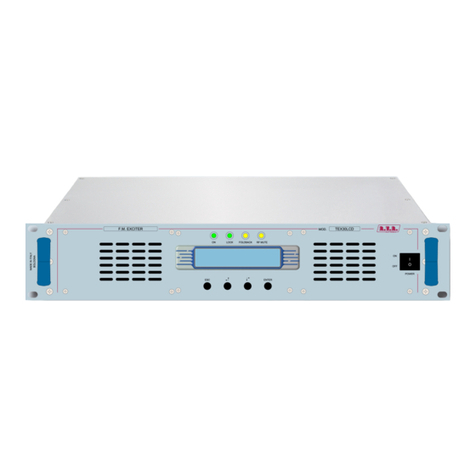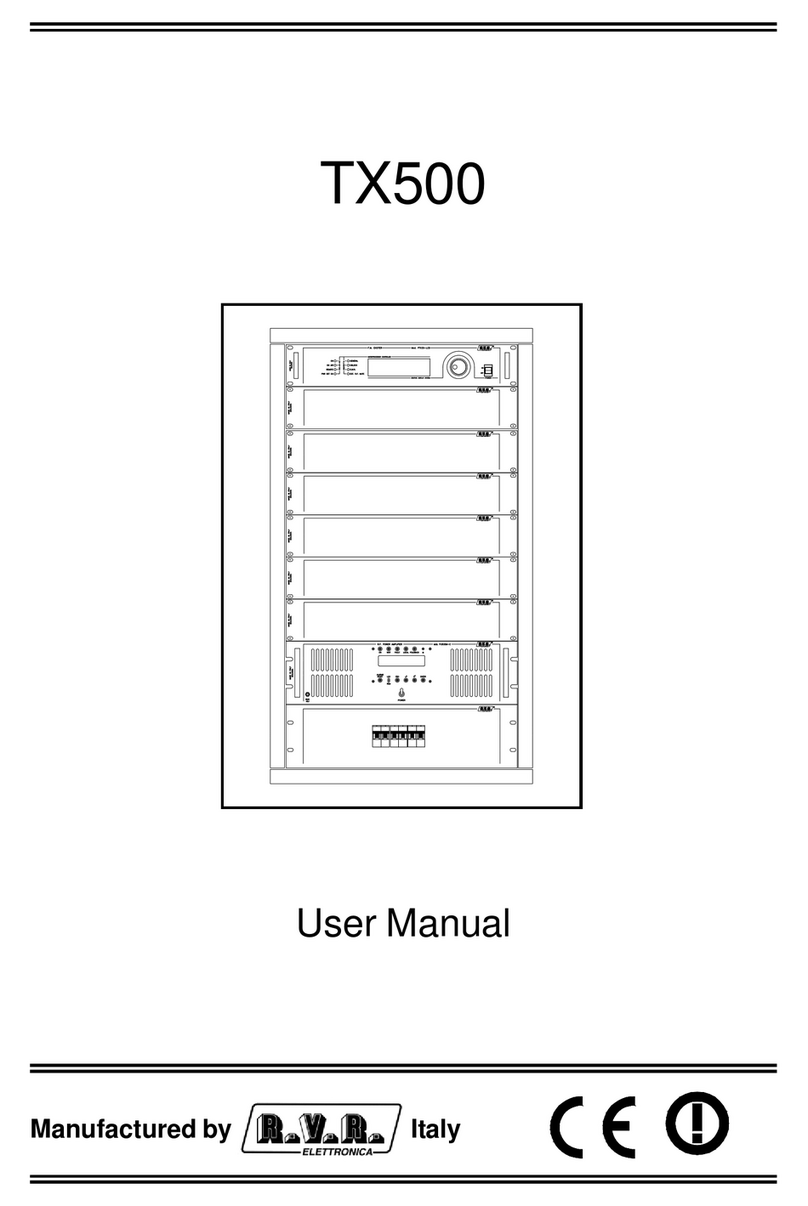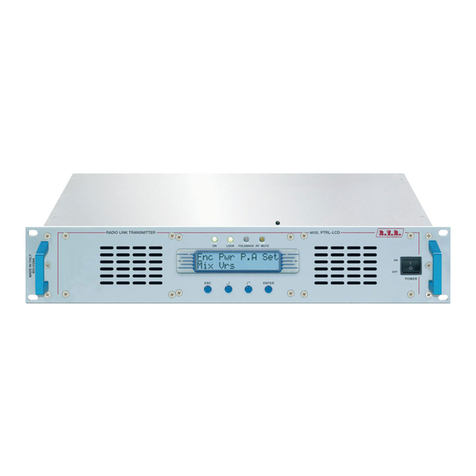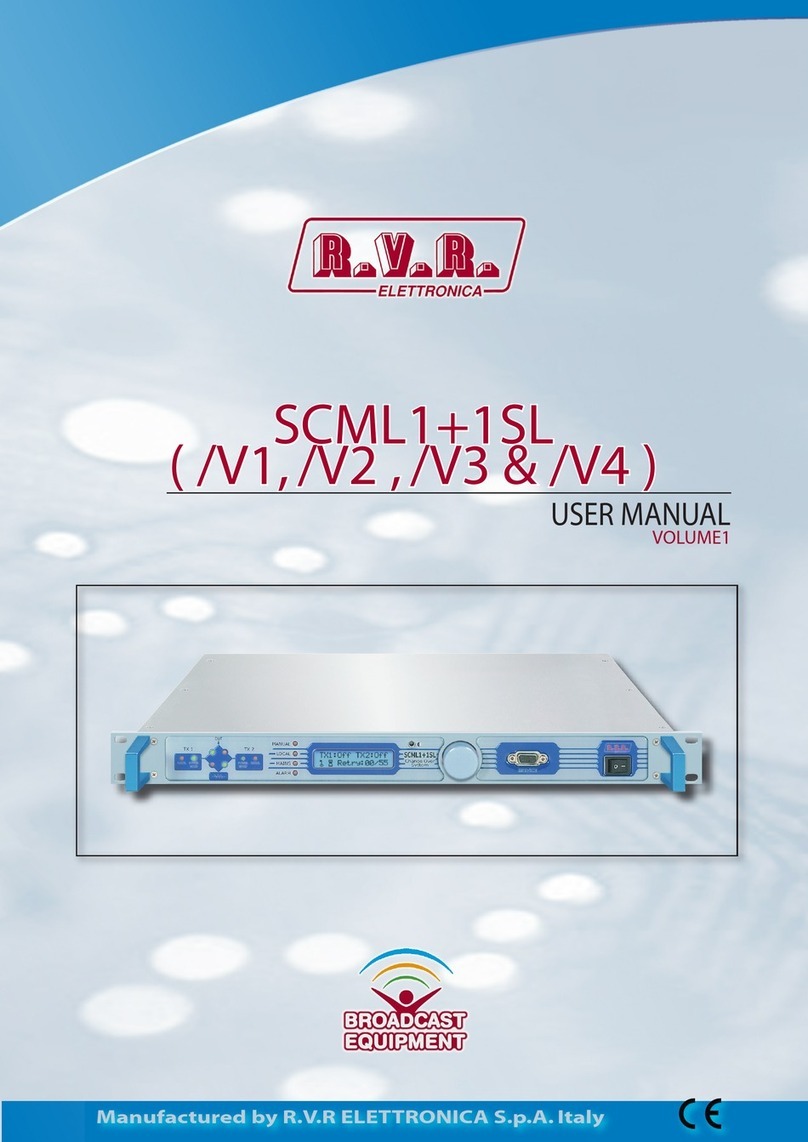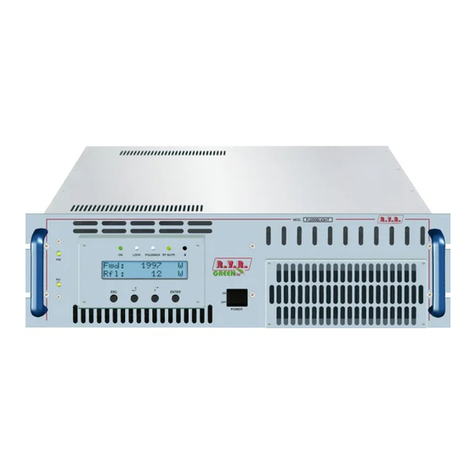1. Preliminary Instructions
• General foreword
The equipment in object is to considering for uses,
installation and maintenance from “trained” or “qualified”
staff, they conscious of the risks connected to operate
on electronic and electrical circuits electrical.
The “trained” definition means staff with technical
knowledge about the use of the equipment and with
responsibility regarding the own safety and the other
not qualified staff safety place under his directed
surveillance in case of works on the equipment.
The “qualified” definition means staff with instruction and
experience about the use of the equipment and with
responsibility regarding the own safety and the other not
qualified staff safety place under his directed surveillance
in case of works on the equipment.
WARNING: The machine can be e�uipped withWARNING: The machine can be e�uipped withThe machine can be e�uipped withThe machine can be e�uipped with
an ON/OFF switch which could not remove completely
voltages inside the machine. It is necessary to
have disconnected the feeding cord, or to have
switched off the control panel, before to execute
technical operations, making sure himself that the
safety connection to ground is connected.
The technical interventions that expect the e�uipment
inspection with circuits under voltage must be carry out
from trained and �ualified staff in presence of a
second trained person that it is ready to intervene
removing voltage in case of need.
R.V.R. Elettronica SpA doesn’t assume responsibility for
injury or damage resulting from improper procedures or
practices by untrained/unqualified personnel in the handling
of this unit.
WARNING: The e�uipment is not water resistant
and an infiltration could seriously compromise
its correct operation. In order to prevent fires or
electric shocks, do not expose the e�uipment to rain,
infiltrations or humidity.
Please observe all local codes and fire protection standards
during installation and use of this unit.
WARNING: The e�uipment has to its inside
exposed parts to risk of electric shock, always
disconnect power before opening covers or removing
any part of this unit.
Fissures and holes are supplied for the ventilation in order
to assure a reliable efficacy of the product that for protect
itself from excessive heating, these fissures do not have
to be obstructed or to be covered. The fissures doesn’t be
obstructed in no case. The product must not be incorporated
in a rack, unless it is supplied with a suitable ventilation or
that the manufacturer’s instructions are been followed.
WARNING: This e�uipment can irradiate radioWARNING: This e�uipment can irradiate radio: This e�uipment can irradiate radio
fre�uency energyand if it’s not installed following
the instructions contained in the manual and local
regulations it could generate interferences in radio
communications.
WARNING: This device has a connection to groundWARNING: This device has a connection to ground: This device has a connection to ground
on the power cord and on the chassis. Check that they
are correctly connected.
Operate with this device in a residential ambient can cause
radio disturbs; in this case, it can be demanded to the user
to take adequate measures.
Specifications and informations contained in this manual
are furnished for information only, and are subject to change
at any time without notice, and should not be construed
as a commitment by R.V.R. Elettronica SpA.
The R.V.R. Elettronica SpA assumes no responsability or
liability for any errors or inaccuracies that may appear in
this manual, including the products and software described
in it;and it reserves the right to modify the design and/or
the technical specifications of the product and this manual
without notice.
• Warning regarding the use designated and the use
limitations of the product.
This product is an transmitter radio indicated
for the audio broadc asting service in frequency
modulation. It uses working frequencies that are not
harmonized in the states of designated user.
The user of this product must obtain from the Authority
for spectrum management in the state of designated
user the appropriate authorization to use the radio
spectrum, before putting in exercise this equipment.
The working frequency, the transmitter power, let alone
other specifications of the transmission system are subject
to limitation and definited in the authorization obtained.
2. Warranty
R.V.R. Electronics S.P.A. guarantees absence of
manufacturing defect and the good operation for the
products, within the provided terms and conditions.
Please read the terms carefully, because the purchase of
the product or acceptance of order confirmation, constitutes
acceptance of the terms and conditions.
For the last legal terms and conditions, please visit our web
site (WWW.RVR.IT) wich may also be changed, removed
or updated for any reason without prior notice.
Warranty will be void in cases of opened products, physical
damage, misuse, modification, repair by unauthorised
persons, carelessness and using the product for other
purpose than its intended use.
In case of defect, proceed like described in the following:
1 Contact the dealer or distributor where you purchased
the unit. Describe the problem and, so that a possible
easy solution can be detected.
Dealers and Distributors are supplied with all the information
about problems that may occur and usually they can repair
the unit quicker than what the manufacturer could do. Very
often installing errors are discovered by dealers.
2 If your dealer cannot help you, contact R.V.R. Elettronica
and explain the problem. If it is decided to return the
unit to the factory, R.V.R. Elettronica will mail you a
regular authorization with all the necessary instructions
to send back the goods;
3 When you receive the authorization, you can return the
unit. Pack it carefully for the shipment, preferably using
the original packing and seal the package perfectly.
The customer always assumes the risks of loss (i.e.,
IMPORTANT
The symbol of lightning inside a triangle placed on the product, evidences the operations for
which is necessary gave it full attention to avoid risk of electric shocks.
The symbol of exclamation mark inside a triangle placed on the product, informs the user
about the presence of instructions inside the manual that accompanies the equipment, im-
portant for the efficacy and the maintenance (repairs).
